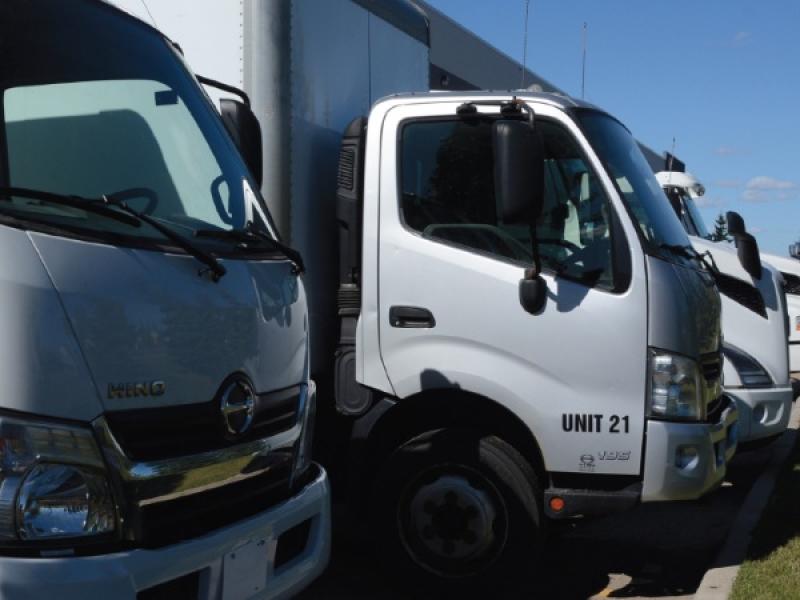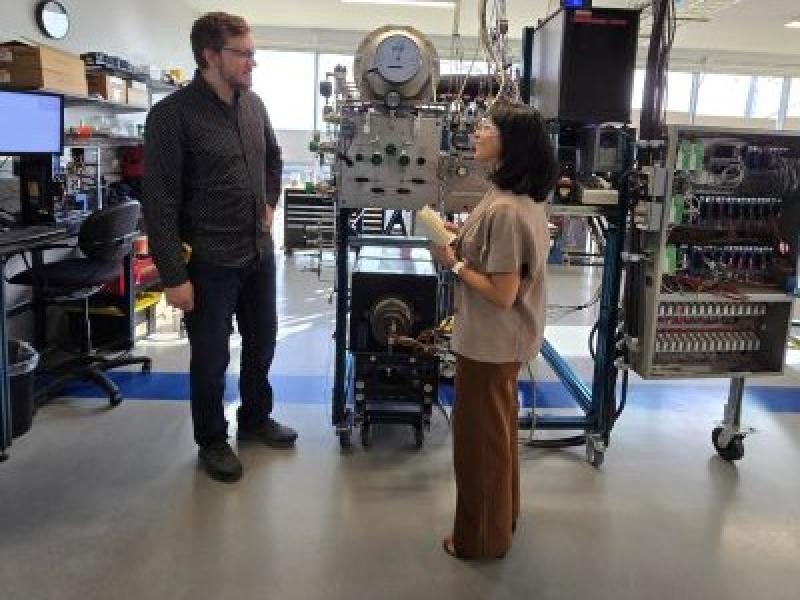
Light urban vans and trucks in the Greater Toronto and Hamilton Area (GTHA) are best suited to being swapped for battery-electric versions today, according to a report by the Pembina Institute.
The Calgary-based think tank’s analysis suggests approximately 30 per cent of medium-duty trucks (Class 3 and 4) in the region will be electrifiable from now to 2027; for the larger city delivery or single-axle trucks (Class 5 and 6), approximately 15 per cent; long-haul heavy trucks (Class 7 and 8), around 10 per cent.
From 2035 and beyond, Pembina predicts between 70 and 90 per cent of all medium- and heavy-duty vehicles (MHDVs) in the GTHA will meet the requirements for electrification, pushed by advancements in battery capacity and public charging infrastructure.
The report released Monday, titled Electrifying Fleet Trucks, shows “the vast majority of vehicles really are going to fit the profile of electrification” and policies should be instituted to accelerate the transition, Adam Thorn, the director of transportation at Pembina, told Sustainable Biz Canada in an interview.
Designing the case study
Zero-emission vehicles such as battery-electric models make up a small portion of MHDV fleets in Ontario — data from Transport Canada found only 1.9 per cent in Q4 2024.
The Pembina Institute chose the GTHA for the case study because it is home to approximately half of all vehicles in Ontario, and its roads form an economic artery where commercial MHDVs make up a substantial amount of traffic.
Data for the study was acquired in January and July 2023 from thousands of telematics units in trucks, tracking information such as how long and far the trucks drove every day and when and where they made their daily visits to forward sortation areas.
“This is data from real world trucks out there doing their jobs every day,” Thorn said.
That data was used to determine if the trucks fit Pembina’s profile of being electrifiable. Two key factors were vehicle range and access to a public or shared charging network.
Factors such as cold weather halving a vehicle's rated range and heavy truck battery banks lowering a truck’s payload were accounted for in the analysis.
How electrifiable are the trucks?
Medium-duty trucks for tasks such as delivering packages in urban areas were deemed the most viable for electrification today because they are the likeliest to sit idle for eight to 10 hours every day, presenting an opportunity to charge. Also, most are used for predictable, local trips that do not require batteries with high capacity.
By 2034, Pembina expects approximately 55 per cent of Class 3 and 4 trucks will be electrifiable. By 2035 and beyond, around 90 per cent.
The viability is more complicated when it comes to Class 5 to 6 trucks. Expected to travel more per day than Class 3 and 4 trucks, the current battery capacities and public charging infrastructure are limitations. Thus, around 15 per cent of city delivery or single-axle trucks are expected to be electrifiable in the near future. But that figure rises to approximately 40 per cent by 2034 and 80 per cent beyond 2035.
Class 7 and 8 trucks are “the toughest use case when it comes to electrification” Thorn said. The long-haul trucks have to travel the farthest distances out of the MHDVs and there are fewer models being manufactured compared to smaller counterparts.
Only about 10 per cent of long-haul trucks are electrifiable today. But Pembina predicts that could more than triple to approximately 35 per cent by 2034 and reach 70 per cent by 2035.
EV market is ‘maturing’

Thorn does not see the current struggles within the electric vehicle (EV) market as a major setback to the findings of the report. Even with deeply distressed electric truck makers such as Lion Electric, or Honda delaying plans for a $15-billion Ontario EV factory due to predictions for softened demand, he views it as the “normal maturing of a market.”
He explained the EV market is adjusting from the early adopters to mainstream users, plus the initial over-enthusiasm that fuelled aggressive EV uptake forecasts is being tamed. Thorn also pointed to growth in electric mobility demand outside of Canada, such as California, Europe and China, as a reason to stay optimistic.
To boost electric truck adoption, Thorn recommended government actions such as:
- aiding small businesses in electrifying their fleets;
- standardizing charging requirements;
- reducing electricity rates for charging operators; and
- prioritizing key zones and streamlining approvals for truck-ready public chargers.
To further explore whether Ontario’s grid could withstand the possible surge of electric trucks, Pembina will publish future reports examining where and how much charging infrastructure is needed, and forecasting the energy demand.
“It’s those types of policies that we really want to see in the medium- and heavy-duty vehicle sector as well, that create that kind of certainty for investors who will then of course see the opportunity in building that public charging infrastructure.”










